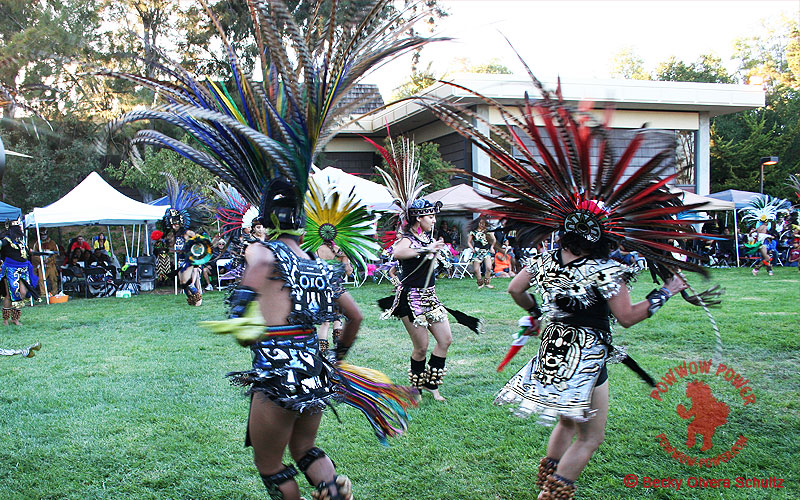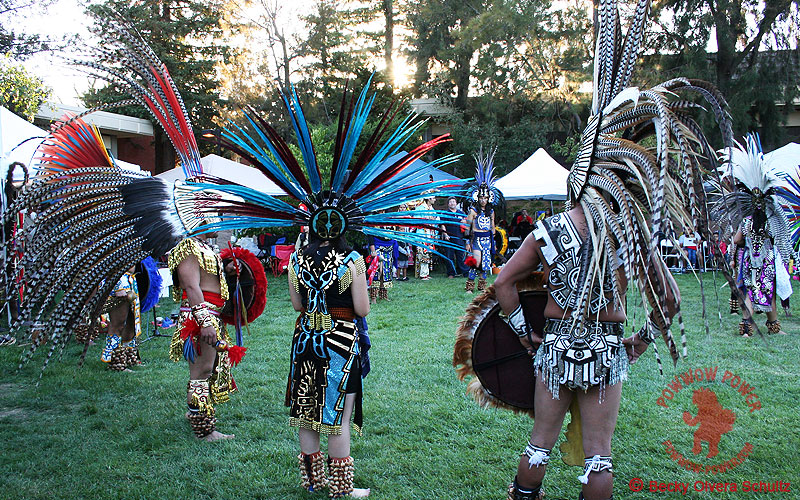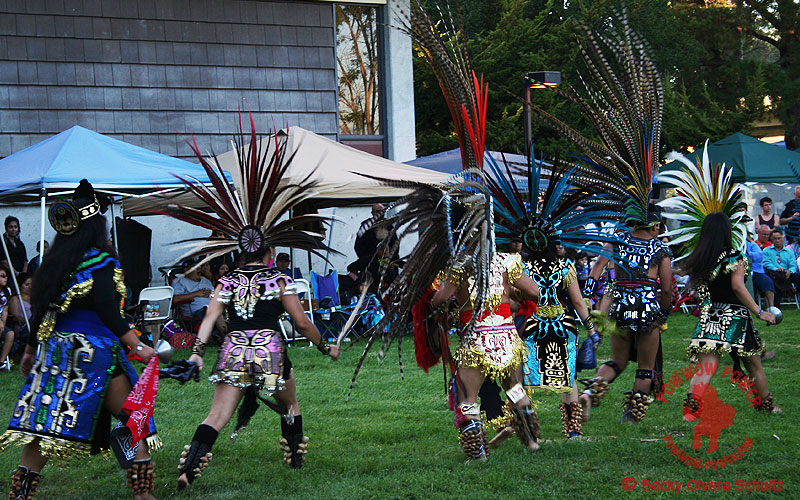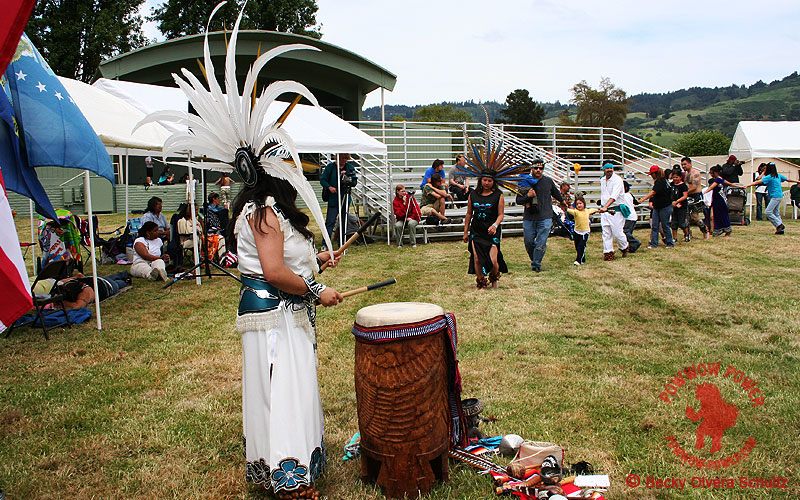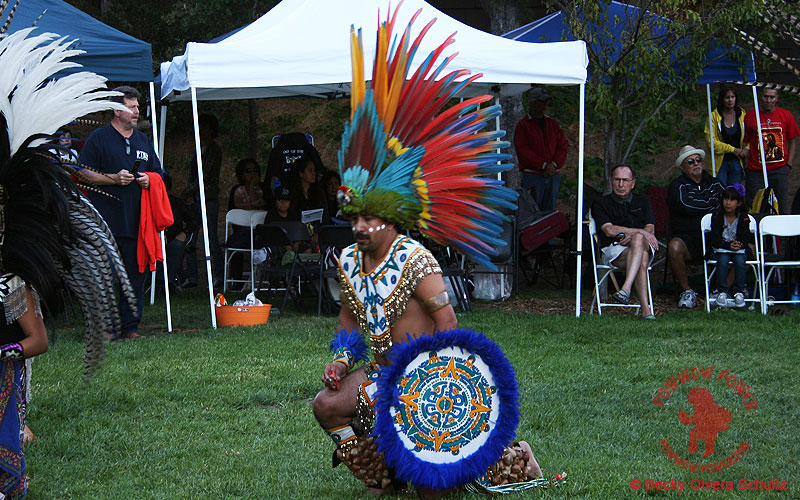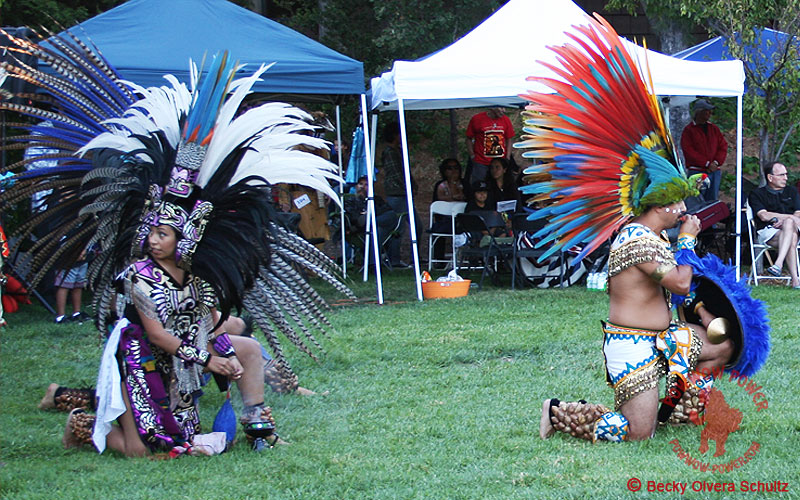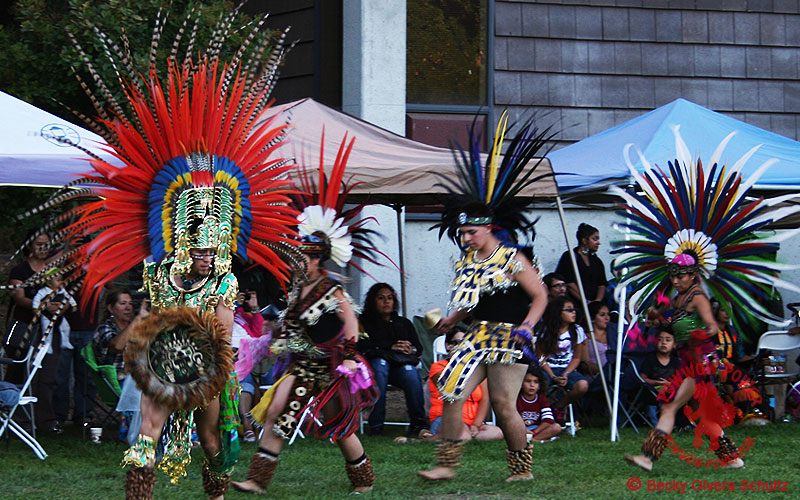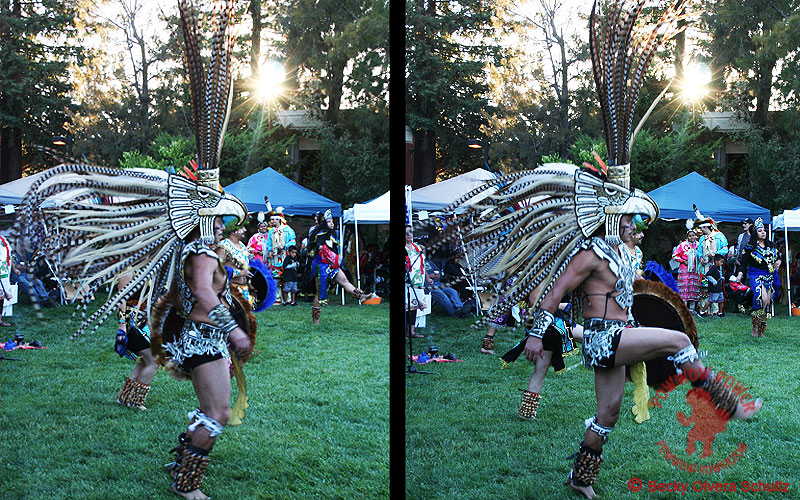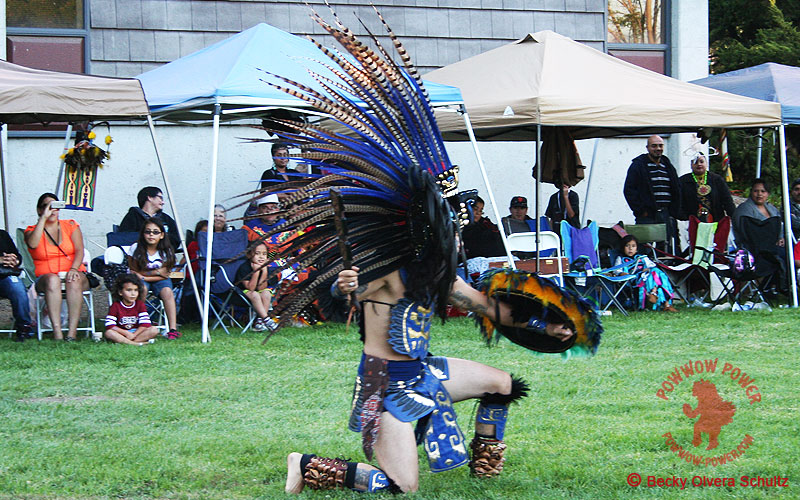Aztec Dancers
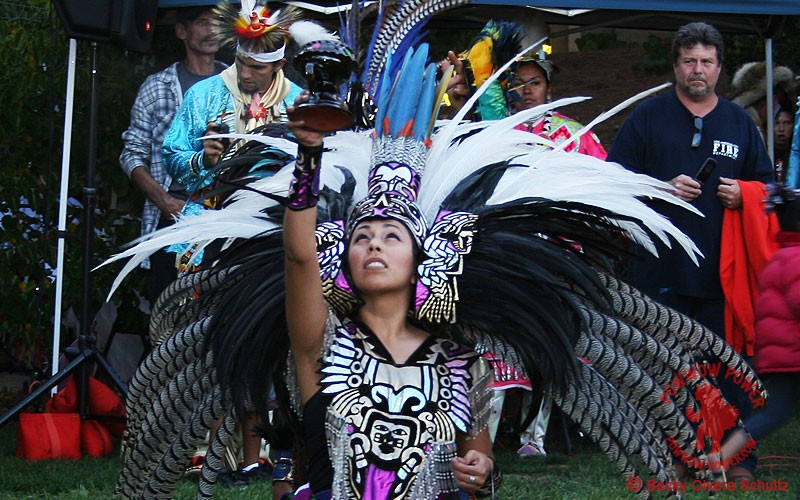
Aztec Dancers
A very entertaining and common event at most powwows is a dance exhibition of Aztec Dancers, who usually perform at dinner break in the arena. Aztecs are native peoples indigenous to the Americas, specifically Mexico. Some Native Americans don’t accept Aztecs as native peoples, but they most certainly are.
Long before the invading Spanish hit the Americas, there were no borders. It is also believed that the Pueblo peoples and ancient Anasazi peoples of the southwestern states originally came from the south from what is known today as Mexico.
The word Aztec means ‘man of Aztlan’, the place where the Mexica came from. The term was not commonly used until 18th and 19th century historians adopted it. They migrated south to central Mexico over 1000 years ago. The migration was motivated by their search for their destiny, which was foretold by their leader, Huitzilopochtli. They adopted some of the Tolteca culture, which was a preexisting Meso American culture. The Aztec people referred to themselves as Mexica after the migration. This is how they came to be known to the Spaniards, hence the name Mexico.
By the time of the arrival of Columbus, the Mexica had developed and prospered and Tenochtitlan (Mexico City) became the heart of their civilization. The people of this great civilization were renowned for their highly organized society, their abilities as merchants, warriors, artists, musicians and dancers and for their knowledge of philosophy, mathematics and astronomy.
The language of the true Mexican people is not Spanish but Nautal, an Indian language. There actually well over 60 other Indian languages in Mexico, many of which are still spoken today.
Today’s Aztec dancers are dedicated to preserving the traditions and rituals of the pre-Hispanic culture through the expression of dance and ceremony. They perform at various special events throughout the year and regularly at powwows.
Today, three of the basic forms of Aztec dance are performed; ceremonial rituals, concheros (a rhythmic and slow dance performed to the music of armadillo shell guitars), and warrior dancers, which are very colorful and energetic.
During the Aztec performance, the dancers comprised of both male and female, wear traditional regalia, including large ornate and colorful feather head dresses and seed leggings called chachayotls, that make a rattling noise when they dance. The female dancers wear decorative skirts or tunics and the men wear a type of loincloth called the maaxtlatl. The headdresses on both male and female are beautiful, brightly colored feathers of the macaw, pheasant and other birds. These headdresses, called penachos, are quite large with very long feathers and are very impressive. The dances are accompanied by a large drum, called the huehuetl, a small two tongued wooden drum, called a teponaztli, gourd rattles called ayacaxtli and whistles and flutes call tlapitzalli.
Before they start dancing, one of the dancers will sound the drum and conch shell trumpet. Copal is usually burned. Copal is a tree resin from the Protium Copal Tree and is an aromatic resin used by the cultures of pre-Columbian Mesoamerica as ceremonially as incense. The dances represent the forces of nature, the universal four corners of the earth, human existence and the struggle for power among the elements.
The dancers perform with the dance steps passed from parent to child. The dances represent different meanings, but all express respect for nature and the four elements: earth, water, fire and wind. The dances connect each dancer to their inner selves and a celebration of nature.
There are Aztec dance troupes in nearly all cities, especially in the western and southwestern states. The Aztec dancers are a regular and important component of today’s powwows. They always invite spectators towards the end of their exhibition to join hands in a circle and dance with them. Aztec dancers offer a beautiful performance that is fun for all.
For more information follow these links to Aztec dance groups:
http://www.zihrena.com/aztec-dancers-kalpully-kuahucihuatl
http://www.tezkatlipoka.com/tezkatlipoka-aztec-dance-home
http://www.aztecfiredance.com/index_files/Page825.htm
http://www.ehecatlaztecdancers.com/
https://www.facebook.com/Mexicatiahuipdx/info/?ref=page_internal


